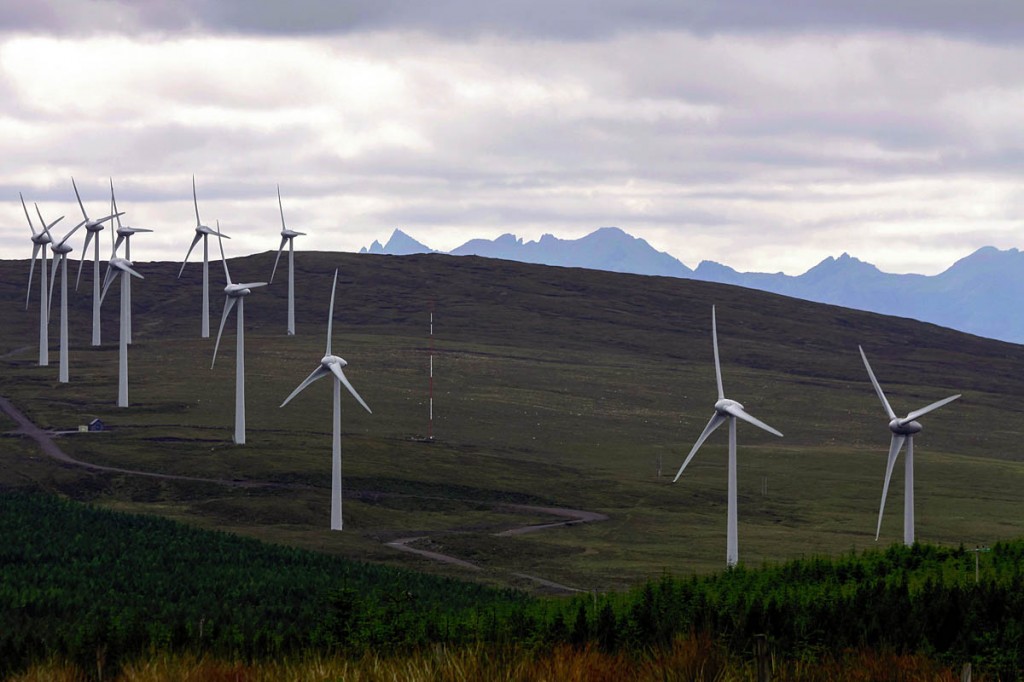A new report by Mountaineering Scotland challenges assertions that windfarms don’t affect tourism.
While most of the developments don’t put off visitors, in vulnerable wild upland areas the effect is significant.
The report, by the organisation’s former director for landscape and planning Dr Dave Gordon, attacks misleading use of evidence which takes examples where windfarms have no effect and applies them to areas where a very significant effect is likely.
Dr Gordon said: “It’s like arguing that smoking isn’t harmful by examining only the health of non-smokers.”
Dr Gordon said he was frustrated at previous reports written to prove a point rather than give an accurate picture. He said: “Proponents of windfarms would have us believe that tourism impacts are negligible. Opponents would have us believe that the destruction of tourism in Scotland is nigh.
“Neither position is at all tenable.”
Mountaineering Scotland, which has 14,000 members and represents hillwalkers, climbers and mountaineers north of the border, said it is not anti-windfarm, but objects to the building of these developments in mountain areas where they have a large visual impact.
Dr Gordon said his concern is that areas essential to landscape-centred tourism will suffer if the evidence from less vulnerable areas is misused to justify development in more sensitive landscapes.
“It’s quite true that the evidence is that most windfarms have no measurable effect on tourism,” he said. “This is the evidence that windfarm developers emphasise when arguing for new developments.
“But there are situations where windfarms would affect tourism – where the tourist economy is dependent on unspoilt landscapes and a sense of wildness and open space. These are often also economically vulnerable areas where any impact on tourism could be locally substantial.
“The areas where we have some data for the effect of windfarms on tourism tend to be those where windfarms have been consented precisely because they are not held to be a threat to the landscape. Half of all onshore windfarm planning applications are refused or withdrawn, with visual impact often given as a reason for refusal.
“Mountaineering Scotland has objected to under five per cent of windfarm applications, which have been in areas where mountain landscape is a prime attraction.
“Most windfarms Mountaineering Scotland has objected to on the grounds of mountaineering tourism impact have been refused or withdrawn. Only eight have been consented, and only two were operational by the end of 2016.
“Where applications have been refused or the windfarms not yet built, there can be no evidence of an effect on tourism, but it would be totally wrong to use this as justification for a wind farm in the wrong place.
“My real fear is that developers and their proponents cite research reports which use evidence from non-sensitive areas to claim that windfarms will have no effect on tourism in areas which may be very sensitive indeed.
“In essence, that research doesn’t prove anything of relevance to those sensitive areas.”
The full report can be read on the Mountaineering Scotland website.

![[CC-3.0]](/lib/img/layout/cc-attr.gif)
GeorgeH
11 November 2017In a recent survey, with over 500 people responding, over 80 per cent of them cited unspoilt countryside as what attracted them to the Highlands.
Over 70 per cent of respondents said the presence of wind turbines would affect their decision to stay in the Highlands, with about the same number saying the presence of the over 500 wind turbines currently planned for the Loch Ness area would affect their decision to stay there. Over 80 per cent said they would not choose accommodation with a view of a wind farm, with about the same number reckoning the presence of turbines made Scotland less attractive to tourists.
(STAG Glenurquhart)
Jonathan
13 November 2017Hi GeorgeH: Any more info on the survey? Unfortunately, too many surveys reported in press releases are self-selected internet ones. They never give good results and are very prone to recruitment manipulation.
For something that it important worth potentially long-term effects we need to ensure the information behind any decisions, either way, is robust.
Sheepy
13 November 2017As an Englishman who loves the hills and mountains for many different reasons, Scotland always appeals as a place of wilderness and of being remote and untouched(yes, I know that's not the reality). However, the sight of these things takes away that self delusion and does make me less inclined to visit a remote and wild place when there are dirty great turbines and/or pylons in plain sight.
Mike
14 November 2017I'm with Sheepy
Scooby
28 November 2017Ditto. I now actively avoid "wild" places with significant wind farm intrusion.